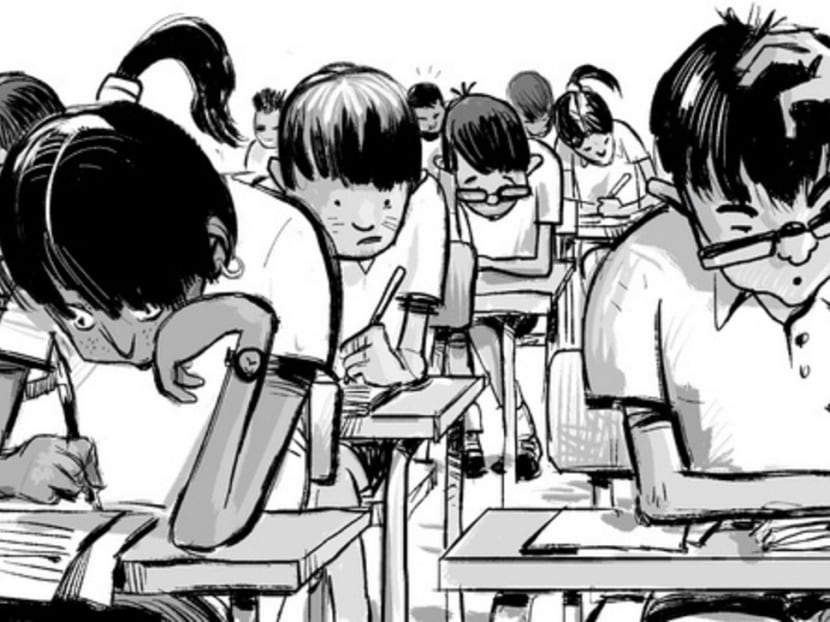Parents are key to success of new PSLE scoring system
Contrary to what the Ministry of Education (MOE) claims, the changes are unlikely to reduce stress among students
The much anticipated changes to the Primary School Leaving Examination (PSLE) were finally announced last week.
The best change, to me, is the priority given to Singaporeans for school postings when there is a tie in the Achievement Levels (AL) scores. Due to the banding of scores, many students will end up with the same points. Those with fewer points will vie for the top schools. This means that the top schools will be filled with Singaporeans first.
With the new system, a child’s raw marks in each subject reflect his level of competency instead of how well he did compared with his peers in the cohort. As such, even if 50 per cent of a cohort scores 80 and above, the marks will not be moderated under a bell curve. All of them will be awarded one to three points.
Hopefully, this will encourage students to work together and help each other score better together, and in turn bring up the standard of our education as a nation. The T-score system is a forced-ranking system and students may see each other as competitors instead.
The choice order of schools will matter more under the new system. Hopefully, this will make parents think twice about risking their children’s chances by placing top-tier schools as their top choices.
Some parents argue that the new system makes it more difficult for a child to make up for a weaker subject by doing well in others. This could affect their chances of getting into a top school.
But the purpose of banding is to let parents know where their children stand so that they can make informed decisions about which secondary schools to apply for.
When a child who is particularly weak in one subject enters a top school, he will likely struggle more to keep up. As such, the new AL system in a way better matches students to the appropriate secondary schools.
WHAT REMAINS THE SAME
Contrary to what the Ministry of Education (MOE) claims, the changes are unlikely to reduce stress among students, especially for those aiming to go to top schools. The only way to ensure that they get four points is to make sure they score more than 93 marks in tests and examinations consistently. Will this lead to more tuition for students who get 80 to 85 marks? Will that result in more examination smart students and a glut of four pointers one day? Will that cause a dilution of so-called elite schools in time to come?
One thing is clear now. As long as examination results are used for school postings, the stress will always be there. We have to explore meaningful ways to post students based on their interests and abilities and decouple the milestone PSLE exam from the posting exercise. Only then can we reduce the stress levels significantly.
For the first batch of students affected by the changes in 2021, they will not have any prior reference on the “cut-off” points for their desired secondary schools. Those who obtain four points will likely opt for the same top schools. This will result in more students having to ballot than the usual one in 10 that the MOE states.
The elite schools will — for a start at least — be even more out of reach because they will be filled by four- or five-pointers. One way to mitigate this is to increase the percentage of students admitted via the Direct School Admission exercise.
The anxiety levels for all parents will rise even for those opting for middle-tier secondary schools. The MOE would need to provide as much information and statistics as possible for the parents to make informed choices.
To make things worse, the current A grade (75 to 90 points) will be split into three achievement levels from 75 to 89. Parents who used to be satisfied with their children getting an A are unlikely to be pleased when their children get AL4 (75 to 79 points) under the new system.
My bet is that these students will not have more free time to discover their strengths and interests like what is portrayed in the MOE video explaining the PSLE changes. More likely than not, these students will be busy “upgrading” their achievement levels.
The reality is, not every one can be an all-rounder. We need to help parents understand that their children need not attend the top secondary schools in order to do well in life. Parents should use the PSLE results to know their children’s strengths and weaknesses and choose a secondary school that can best develop them. They should not aim for a particular school, look at the “cut-off” points, and push their children to achieve the required standards.
Overall, the changes are meant to reduce excessive competition and the over-emphasis on results. However, these intentions can only be achieved if parents are willing to accept their children for who they are and not based on what they can achieve.
ABOUT THE AUTHOR:
Jake Goh is the Principal of a private kindergarten and is interested in educational trends around the world.







